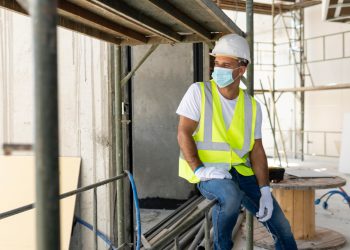As the world continues its transition toward cleaner and more sustainable energy sources, wind power companies are at the forefront of this global movement. Harnessing the natural force of wind to generate electricity, these companies are helping reduce dependence on fossil fuels, cut greenhouse gas emissions, and pave the way for a more resilient and eco-friendly energy landscape.
Understanding Wind Power
Wind power is one of the fastest-growing renewable energy sources in the world. It works by converting the kinetic energy of moving air into mechanical power, which is then transformed into electricity through wind turbines. Modern wind turbines are designed to operate efficiently in various environments, from coastal regions to open plains and offshore locations.
Unlike traditional energy generation methods, wind power produces no harmful emissions during operation. This makes it an essential part of global efforts to combat climate change and achieve carbon neutrality goals.
The Growing Importance of Wind Power Companies
A wind power company plays a critical role in the renewable energy ecosystem. These organizations are responsible for developing, constructing, and maintaining wind farms that generate clean electricity for homes, businesses, and industries. They also conduct research and innovation to improve turbine technology, enhance energy efficiency, and reduce operational costs.
As demand for clean energy rises, wind power companies are investing in large-scale projects that contribute to national grids, providing stable and affordable power. In many countries, they are also partnering with governments to meet renewable energy targets and reduce carbon footprints.
How Wind Power Companies Operate
The operations of a wind power company typically involve several key stages:
- Site Assessment and Planning: Identifying suitable locations with consistent wind speeds and minimal environmental impact.
- Project Development: Securing permits, financing, and community approval for wind farm construction.
- Engineering and Construction: Installing turbines, electrical systems, and grid connections.
- Operations and Maintenance: Ensuring turbines function efficiently and safely throughout their lifespan.
Each stage requires expertise in engineering, environmental science, and data analytics—showcasing how wind energy development is both a technological and ecological achievement.
Benefits of Wind Energy
Wind energy offers numerous advantages that make it one of the most promising renewable power sources. It is clean, producing no air or water pollution; renewable, as wind is a limitless natural resource; and cost-effective, with decreasing installation and maintenance costs over time.
Additionally, wind farms create local employment opportunities during construction and maintenance phases. They also support rural economies by leasing land to host turbines, generating consistent income for landowners without disrupting agricultural activities.
Innovation and Technology in Wind Power
Technology continues to revolutionize the wind energy sector. Modern turbines are taller, more efficient, and capable of generating more power from lower wind speeds. Offshore wind farms—built in ocean waters where winds are stronger and more consistent—represent the next frontier for wind power expansion.
A wind power company today leverages digital tools such as data analytics, predictive maintenance, and smart grid integration to optimize performance. Artificial intelligence (AI) and remote monitoring allow real-time analysis of wind patterns, ensuring maximum energy output and minimal downtime.
Challenges and the Path Ahead
While wind energy has many advantages, it is not without challenges. Factors such as variable wind conditions, high upfront costs, and the need for efficient energy storage solutions can affect large-scale deployment. However, continued innovation and supportive government policies are helping overcome these barriers.
Many wind power companies are now collaborating with researchers and policymakers to improve turbine design, enhance storage capacity, and integrate renewable energy seamlessly into national power grids. These initiatives are crucial for achieving long-term sustainability goals.
Conclusion
Wind power is more than just a renewable energy option—it’s a key driver of global sustainability. A wind power company serves as the backbone of this green revolution, delivering innovative solutions that balance environmental protection with economic growth.
As the world races to reduce carbon emissions and secure energy independence, wind power will continue to play a central role in building a cleaner, more sustainable future. By supporting wind energy initiatives today, we are investing in a tomorrow powered by nature and innovation.












